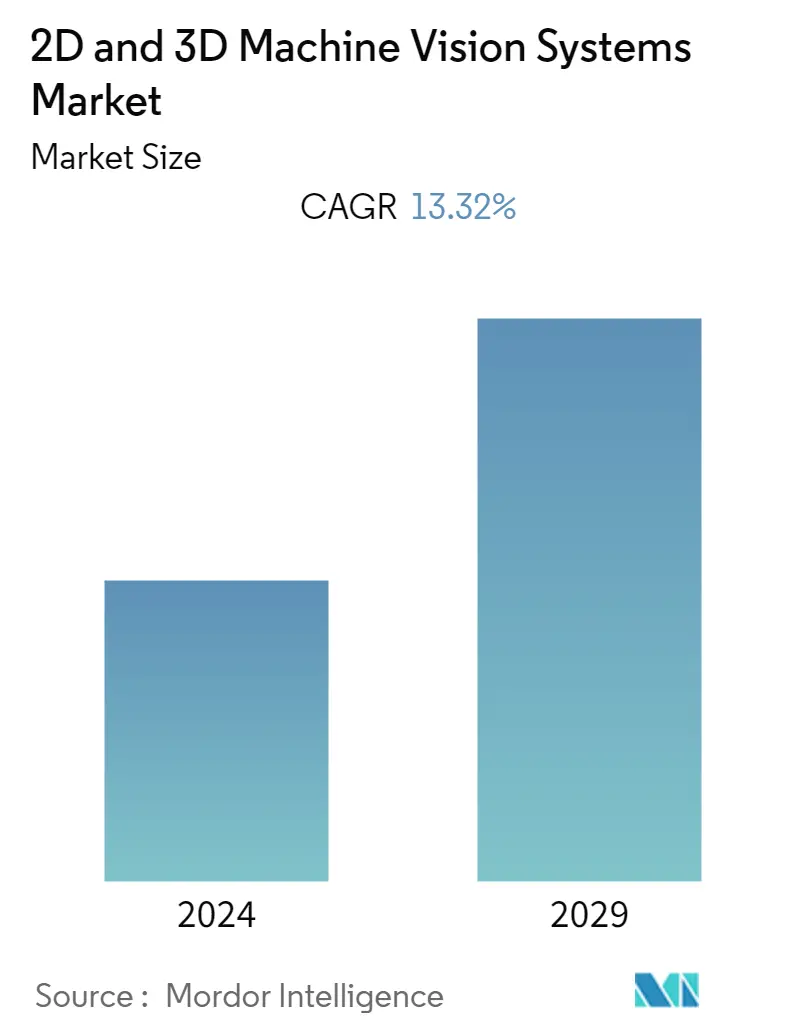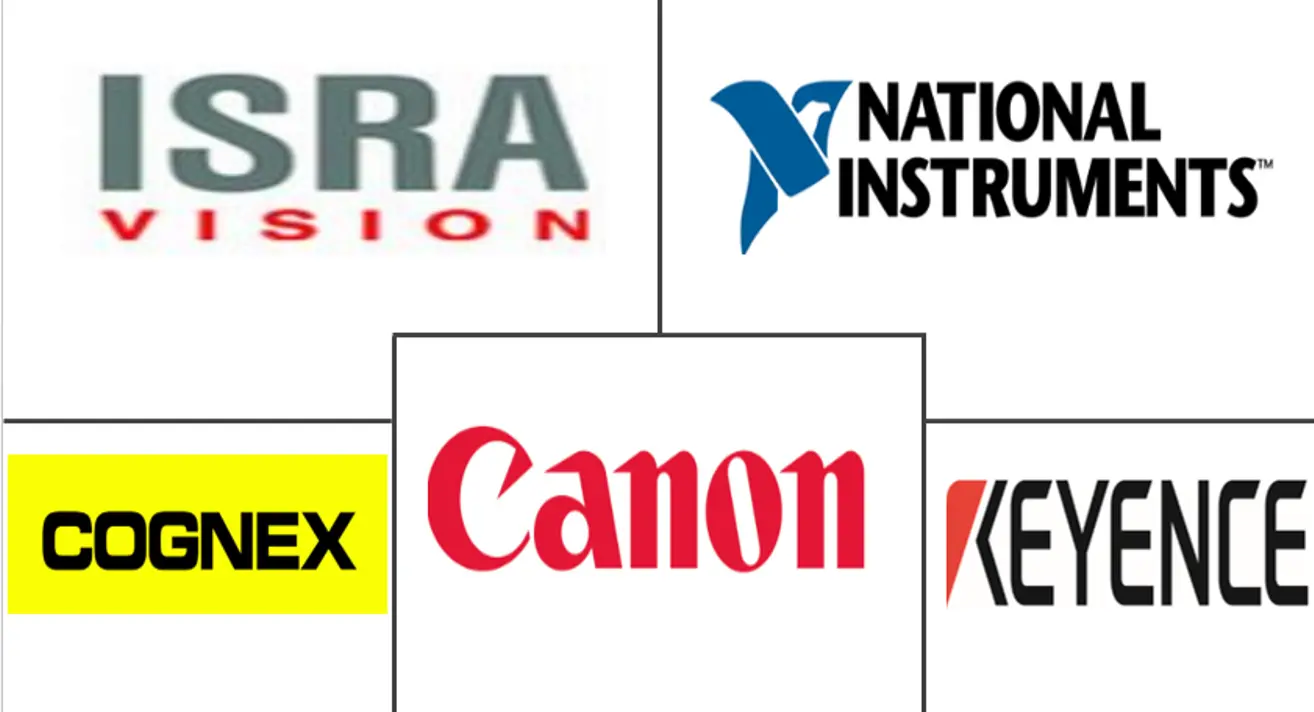Market Size of 2D and 3D Machine Vision Systems Industry

| Study Period | 2019 - 2029 |
| Base Year For Estimation | 2023 |
| CAGR | 13.32 % |
| Fastest Growing Market | Asia Pacific |
| Largest Market | Europe |
| Market Concentration | Low |
Major Players
*Disclaimer: Major Players sorted in no particular order |
Need a report that reflects how COVID-19 has impacted this market and its growth?
2D & 3D Machine Vision Systems Market Analysis
The 2D and 3D machine vision systems market was valued at USD 11.14 billion in 2020 and is expected to reach USD 23.5 billion by 2026, at a CAGR of 13.32% forecast period 2021 to 2026. According to the Automated Imaging Association, machine vision includes all industrial and non-industrial applications in which a combination of hardware and software components provide operational guidance to devices in the execution of their functions based on the capture and processing of images.
- Machine vision provides machines with a gift of sight, complementing or replacing manual inspection tasks, using cameras and image processing. Machine vision applications range from basic tasks, like presence detection, to real-time inspection and grading tasks in harsh environments.
- Manufacturing firms worldwide realize the benefits of machine vision systems, particularly in areas where redundant tasks, like inspection, should be performed with precision. They are playing an essential role in high-speed production lines and hazardous environments. Some of the significant benefits offered by these systems include increased productivity, reduced machine downtime, and tighter process control.
- Over the year, 2D machine vision system has gained a significant application across the industry, in which the target object image acquired for processing is effectively a flat, 2D plan view. This 2D image does not provide any height information. When utilizing 2D cameras, Z (distance from the camera) is generally assumed. This is not as effective as parts may move, change the size, etc., and then the 2D camera may miscalculate the location. For such reasons, end-user industries embrace 3D systems, which allows for a clean part pick-up with known positional data (X, Y, and Z), despite any disruption.
- Recently, in collaboration with Samsung, researchers from the Harvard John A. Paulson School of Engineering and Applied Sciences (SEAS) programmed the first 2D neural network using materials that are only a few nanometers thick (or less). The materials, often made up of a single sheet of atoms, made it possible for the machine vision processor to capture, store, and recognize more than 1,000 images.
- Organizations across the globe are taking in-depth looks at how Industry 4.0 technologies could help them return to productive operations during the COVID-19 crisis. A survey from Plex Systems, a company that sells an intelligent manufacturing platform, surveyed global businesses to learn about their progress in using Industry 4.0 applications. The results showed that only 24% of respondents adopted smart manufacturing options. However, 22% launched pilots to assess the technological solution's worthiness.
